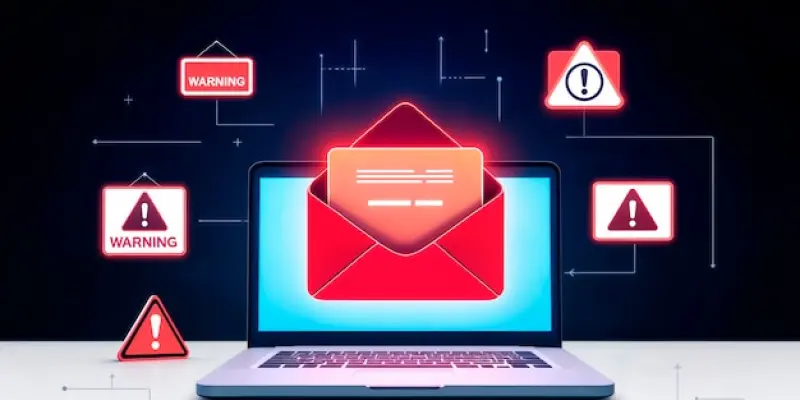In the ever-evolving landscape of digital security, email domain spoofing stands out as a formidable challenge, threatening both individuals and organizations globally. A recent investigation by EasyDMARC reveals that over 90% of the world’s most prominent email domains are significantly vulnerable to such spoofing attacks. Cybercriminals efficiently exploit these vulnerabilities to initiate phishing schemes, potentially compromising sensitive user information. Despite the dire implications of these threats, merely 7.7% of these domains have adopted the rigorous ‘p=reject’ DMARC policy, which decisively blocks malicious emails. DMARC, or Domain-based Message Authentication, Reporting, and Conformance, plays a crucial role in reinforcing authentication protocols like SPF and DKIM, ensuring the verified authenticity of the sender’s domain.
The Global Impact of DMARC Policies
A Tale of Two Policy Approaches
Countries with stringent DMARC mandates, such as the United States, United Kingdom, and the Czech Republic, have witnessed impressive reductions in phishing attacks, evidencing the value of robust standards. The United States has particularly shown progress, with phishing incidents dropping drastically from 68.8% in recent years to 14.2% in 2025. This contrasts sharply with countries employing more voluntary DMARC policies, like the Netherlands and Qatar, which see slower progress in combating spoofing attacks. The post-2023 period marked a significant rise in DMARC adoption, spurred by regulatory pressures such as PCI DSS 4.0.1 and directives from key service providers like Google, Yahoo, and Microsoft. However, a common trend observed during implementation is a tendency to stagnate at ‘p=none’, a passive configuration that neither blocks malicious emails nor provides insights into authentication failures.
Addressing Incomplete DMARC Coverage
Analyzed data indicate a concerning reality: more than 50% of the evaluated domains lack even the most basic DMARC record, rendering them susceptible to exploitation. Furthermore, many domains equipped with DMARC settings fall short in activating reporting mechanisms, such as RUA tags, ultimately hindering the ability to monitor email authentication processes. This gap in enforcement facilitates phishing campaigns leveraging weak policy settings to spoof reputable domains. A notable incident in 2024 involved the Kimsuky group using North Korean associations to effectively impersonate trustworthy organizations, exploiting inadequate DMARC configurations. Similarly, vulnerabilities in Proofpoint’s services were harnessed to mimic reputable brands like Disney and Coca-Cola, further highlighting the critical need for comprehensive DMARC deployment across all sectors.
Industry-wide Imperatives for Stronger DMARC Implementation
Recognizing the Urgency
Gerasim Hovhannisyan, the CEO of EasyDMARC, underscores the peril of inadequate DMARC enforcement, likening passive implementations to underutilized security systems. His insights stress that escalating threats, coupled with compliance obligations, necessitate a proactive and layered application of DMARC protocols. As these vulnerabilities continue to surface, entities are compelled to prioritize DMARC configuration that extends beyond mere registration to full utilization, aligning with best practices to stave off potential cyber threats.
Recent Developments and Future Directions
Highlighting the industry’s progress and aspirations, EasyDMARC’s participation in the upcoming Infosecurity Europe event serves as a platform to emphasize cybersecurity advancements. This event, marking its 30th anniversary at ExCel London, is expected to provide a comprehensive overview of the most pressing security insights, facilitating dialogue on effective DMARC strategies and fostering innovation in email authentication protocols. Such gatherings promise to catalyze a collective commitment towards addressing prevalent vulnerabilities and augmenting security frameworks in anticipation of emerging threats.
Reflections and the Road Ahead
Gerasim Hovhannisyan, CEO of EasyDMARC, highlights the dangers posed by inadequate enforcement of DMARC policies, a vital email security measure. He compares passive DMARC implementations to security systems that aren’t fully utilized, stressing the urgency of a proactive approach as online threats grow increasingly complex and frequent. Compliance requirements add an additional layer of urgency to adopting robust DMARC strategies. Hovhannisyan argues that, as vulnerabilities become more prevalent, organizations must prioritize DMARC configurations. This means going beyond mere registration. Companies need to implement these protocols fully, aligning with industry best practices to effectively fend off possible cyber threats. By ensuring comprehensive use, entities can safeguard their systems and data more efficiently, reducing the risk of unauthorized email activities that could lead to detrimental security breaches. It’s essential to consider DMARC as a critical component of a layered cybersecurity approach.

